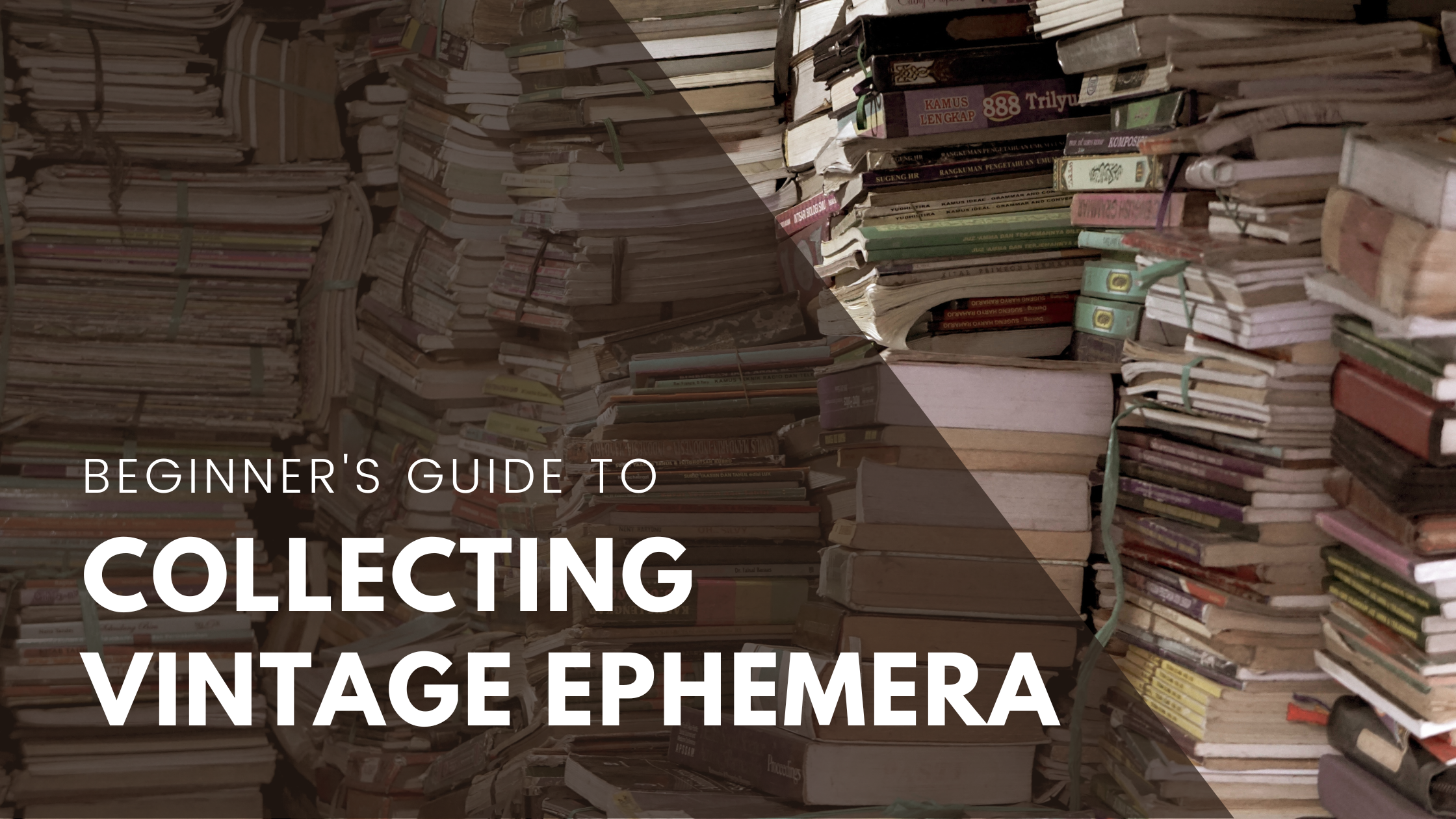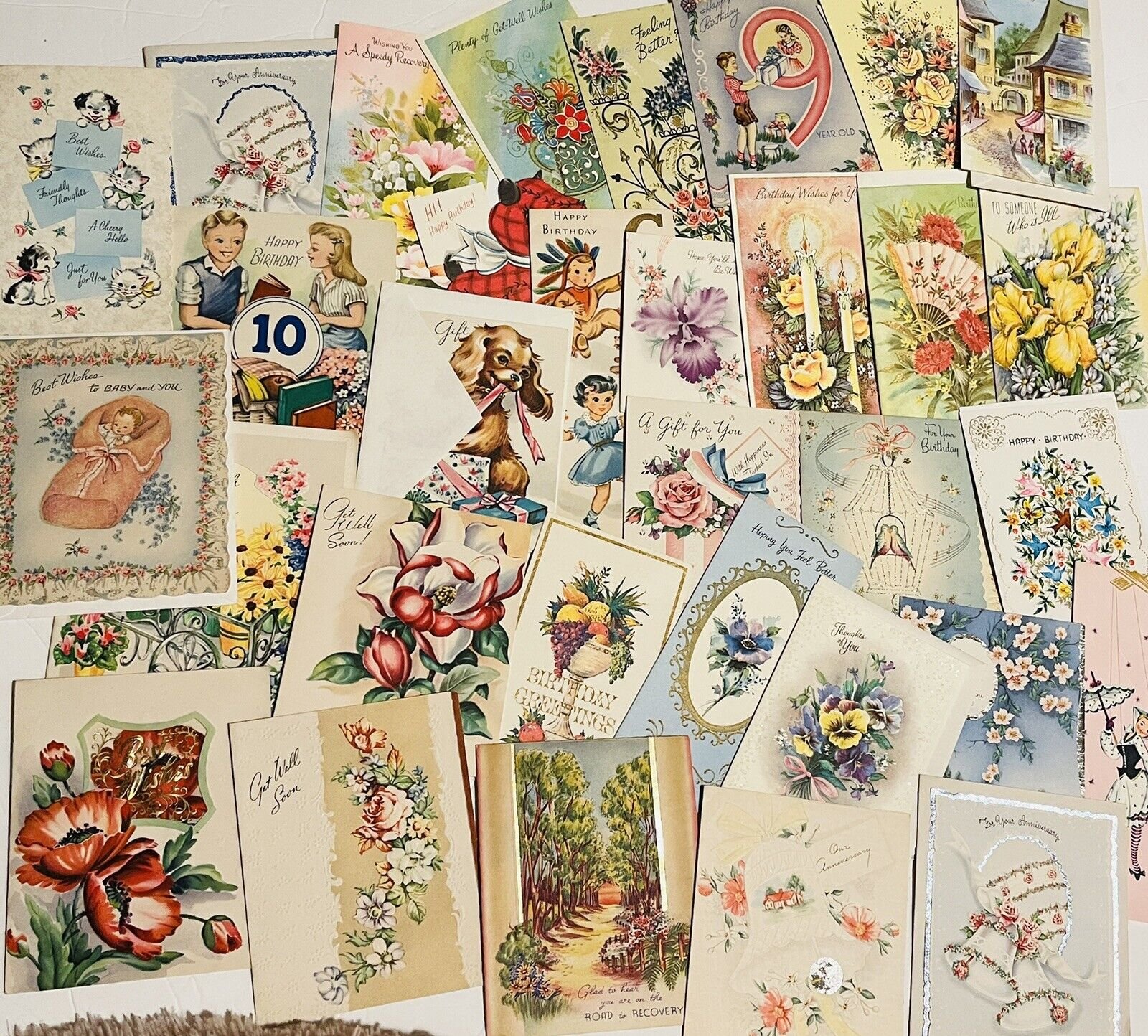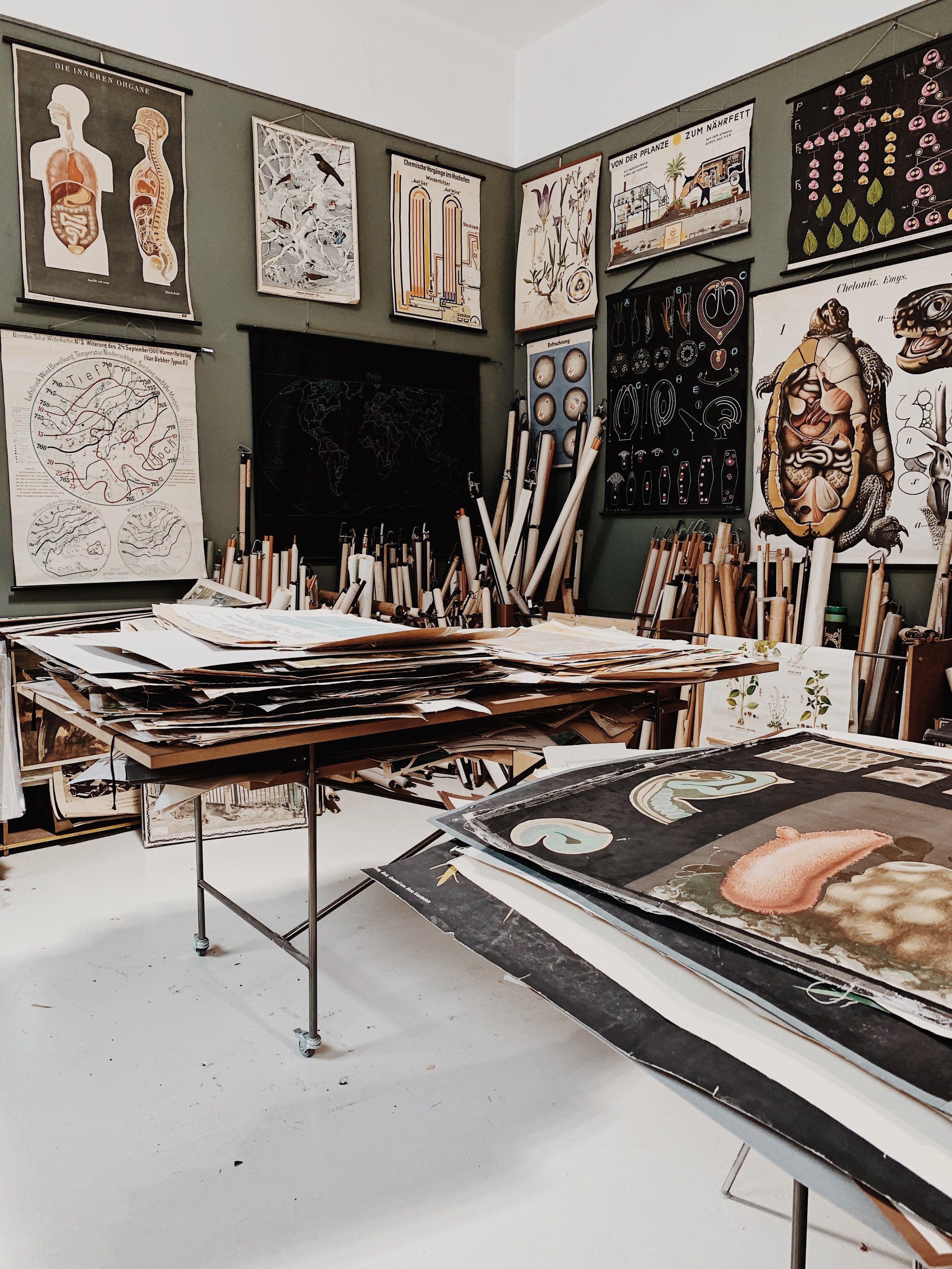Vintage Ephemera - A Beginner’s Guide to Collecting
What is Vintage Ephemera?
Vintage ephemera refers to paper items not intended to be saved or preserved but have become collectible over time. Here are a few examples of popular types of vintage ephemera:
Postcards: Vintage postcards are collectible cards popular in the early 20th century. They often feature scenic views, artwork, or photographs of famous people or places.
Photographs: Vintage photographs, especially those that capture historical moments, can be highly collectible. These may include family photos, candid snapshots, or images of historical events.
Advertising materials: Vintage advertising materials like posters, flyers, and brochures are highly collectible. These may feature iconic brands, slogans, or designs from a particular era.
Magazines and newspapers: Vintage magazines and newspapers can provide a window into the past and may include historical events, cultural trends, and famous figures.
Greeting cards: Vintage greeting cards, especially those from major holidays like Christmas or Valentine's Day, can be highly collectible. These may feature intricate designs, unique illustrations, or sentimental messages.
Sheet music: Vintage sheet music, especially from the early 20th century, can be highly collectible. These may feature popular songs from the period and include unique artwork or illustrations.
Travel ephemera: Vintage travel ephemera like maps, tickets, and travel brochures can be highly collectible. These may provide insight into historic travel destinations, transportation methods, and cultural trends.
Overall, there is a wide variety of vintage ephemera that people may be interested in collecting, including postcards, photographs, advertising materials, magazines and newspapers, greeting cards, sheet music, and travel ephemera.
History of Collecting Ephemera
Collecting ephemera has a long and fascinating history that dates back centuries. Many items we now consider ephemera were initially produced to be collected or saved by their owners.
For example, individuals often collected early printed materials like broadsides and pamphlets to document political or religious events or preserve popular songs or poems. During the 19th century, trade cards and advertising materials were widely collected to document consumer culture's growth and mass marketing's rise.
In the early 20th century, postcards became a popular collectible item, and millions of cards were produced and sold to collectors worldwide. Other types of ephemera, such as magazines, newspapers, and sheet music, also became popular collectibles during this time.
In the mid-20th century, the rise of the internet and digital media led to a decline in the production of printed ephemera. Still, it also opened up new opportunities for collectors to find and acquire rare and valuable items. Today, ephemera collectors can find various things online and at antique shops, flea markets, and other venues.
Throughout its long history, collecting ephemera has been an important way for individuals to document and preserve their time’s cultural and social history. Studying and collecting ephemera remains a popular and fascinating hobby for people worldwide.
Pros and Cons of Collecting Vintage Ephemera
Collecting vintage ephemera can be a fascinating and rewarding hobby, but there are pros and cons, like any hobby. Here are some of the pros and cons of collecting vintage ephemera:
Pros:
Historical significance: Ephemera provides a unique glimpse into the past and can help us understand a particular period's cultural, social, and political context.
Unique items: Collecting ephemera allows you to acquire unique and one-of-a-kind items that may not be available anywhere else.
Affordable: Compared to other collectibles, many types of ephemera can be relatively affordable, making them accessible to a wide range of collectors.
Fun and rewarding: Collecting vintage ephemera can be a fun and rewarding hobby that provides a sense of satisfaction and accomplishment.
Cons:
Fragility: Ephemera can be fragile and easily damaged, making it challenging to preserve and protect.
Rarity: Some types of ephemera can be extremely rare and difficult to find, making it challenging to build a comprehensive collection.
Storage and display: Properly storing and displaying ephemera can require specialized knowledge and equipment, which can be challenging for some collectors.
Value fluctuations: The value of ephemera can be highly dependent on factors like condition, rarity, and historical significance, which can lead to changes in value over time.
Photo by Mitch Rosen on Unsplash
Tips for Collecting Vintage Ephemera
Collecting vintage ephemera can be a fun and rewarding hobby, but it's essential to keep a few things in mind to ensure that you are collecting items that are in good condition and have value. Here are some tips for collecting vintage ephemera:
Know what you're looking for: Research the types of vintage ephemera that interest you before collecting. Learn about the different types of items, the periods they were produced in, and the factors that determine their value.
Buy from reputable sources: When buying vintage ephemera, it's crucial to buy from reputable sources. Look for dealers specializing in vintage paper items and check their reviews and ratings before purchasing.
Check for condition issues: Vintage ephemera can be fragile and easily damaged, so it's important to carefully inspect items for condition issues like tears, stains, or fading. Look for items that are in good condition, or that can be restored if necessary.
Store items correctly: To preserve your vintage ephemera collection, store items in acid-free folders or sleeves and keep them in a dry, cool place away from direct sunlight.
Consider the value: The value of vintage ephemera can vary widely depending on factors like rarity, condition, and historical significance. When collecting items as an investment, it's important to consider their potential value before purchasing.
Follow your interests: Ultimately, the key to collecting vintage ephemera is to follow your interests and collect items that you are passionate about. Whether you are interested in postcards, photographs, or travel ephemera, building a collection that reflects your interests can be a rewarding experience.
Ephemera Society of America
The Ephemera Society of America is a non-profit organization dedicated to studying, preserving, and appreciating vintage ephemera. Founded in 1980, the society brings together collectors, scholars, and enthusiasts of all kinds of ephemera, including paper items like postcards, advertising materials, printed ephemera, and three-dimensional objects like toys, games, and other collectibles.
The society holds an annual conference where members can meet, share their collections, and attend presentations and workshops on topics related to ephemera. They also publish a quarterly newsletter and maintain an online directory of dealers, museums, and other resources related to ephemera.
In addition to promoting the study and preservation of ephemera, the Ephemera Society of America also supports research and education related to these items' history and cultural significance. They have published several books and catalogs related to ephemera and provided grants and other forms of support to scholars and organizations in this field.
Photo by Mathias Reding on Unsplash
Overall, the Ephemera Society of America is a valuable resource for anyone interested in the study, preservation, and appreciation of vintage ephemera and provides a vibrant community for collectors and enthusiasts from all walks of life.
While some challenges are associated with collecting vintage ephemera, the unique historical significance and the potential for acquiring rare and one-of-a-kind items make it a rewarding and fascinating hobby for many collectors.










